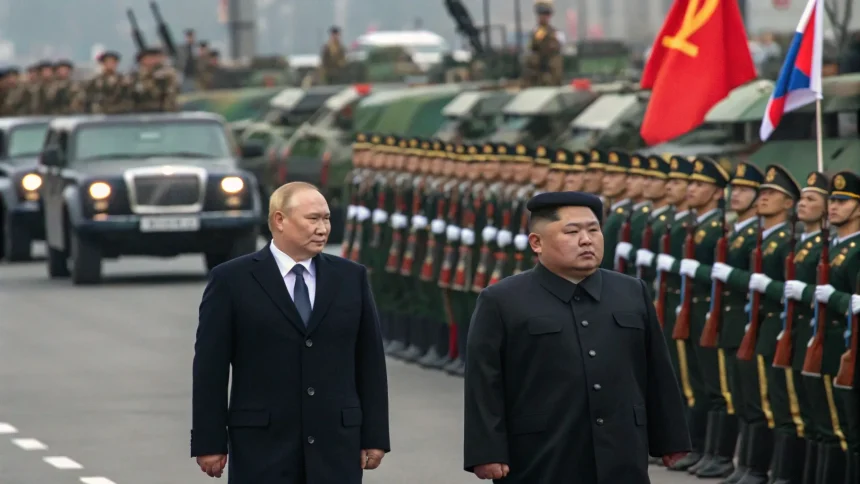Russian President Vladimir Putin and North Korean leader Kim Jong Un have arrived in Beijing to participate in China’s “Victory Day” military parade. The high-profile event has drawn leadership from more than 20 countries, marking a significant diplomatic gathering in the Chinese capital.
The parade, which commemorates China’s military achievements, serves as both a display of military might and an opportunity for international diplomacy. The presence of Putin and Kim, two leaders who maintain complicated relationships with Western nations, adds particular significance to this year’s event.
International Participation
The attendance of leaders from over 20 nations demonstrates China’s diplomatic reach and influence on the global stage. While the full list of participating countries has not been detailed, the presence of both Russian and North Korean leadership signals China’s ongoing relationships with these nations despite international tensions.
Putin’s appearance comes amid Russia’s ongoing conflict in Ukraine and increasing isolation from Western powers. For Kim Jong Un, the trip represents one of his rare foreign diplomatic engagements, as the North Korean leader seldom travels abroad.
Strategic Significance
The gathering of these particular leaders in Beijing carries substantial geopolitical weight. China, Russia, and North Korea have increasingly found common ground in recent years, particularly in their opposition to Western influence in their respective regions.
Military analysts note that the parade offers China an opportunity to showcase its growing military capabilities to both allies and potential adversaries. For visiting leaders, participation signals support for China and potentially opens doors for enhanced military cooperation.
The event also allows for sideline meetings between participating leaders, creating opportunities for diplomatic discussions away from the formal parade activities.
Regional Implications
The gathering of these leaders occurs against a backdrop of shifting power dynamics in Asia. China’s hosting of the Victory Day parade with such high-profile attendance demonstrates its position as a regional power center.
For neighboring countries not participating in the event, the parade and its attendees may raise concerns about growing military alignments in the region. Security experts point out that such displays often serve dual purposes of national pride and strategic messaging.
The United States and its allies are likely monitoring the event closely, particularly any signs of increased military cooperation between China, Russia, and North Korea.
The parade represents more than a ceremonial event—it functions as a visual representation of China’s military partnerships and diplomatic relationships. As global tensions persist in various regions, the gathering of these particular leaders in Beijing highlights the complex nature of international relations and the ongoing realignment of global power structures.
As the parade concludes, attention will turn to any joint statements or agreements that might emerge from the gathering, potentially signaling new developments in the relationships between these nations.







